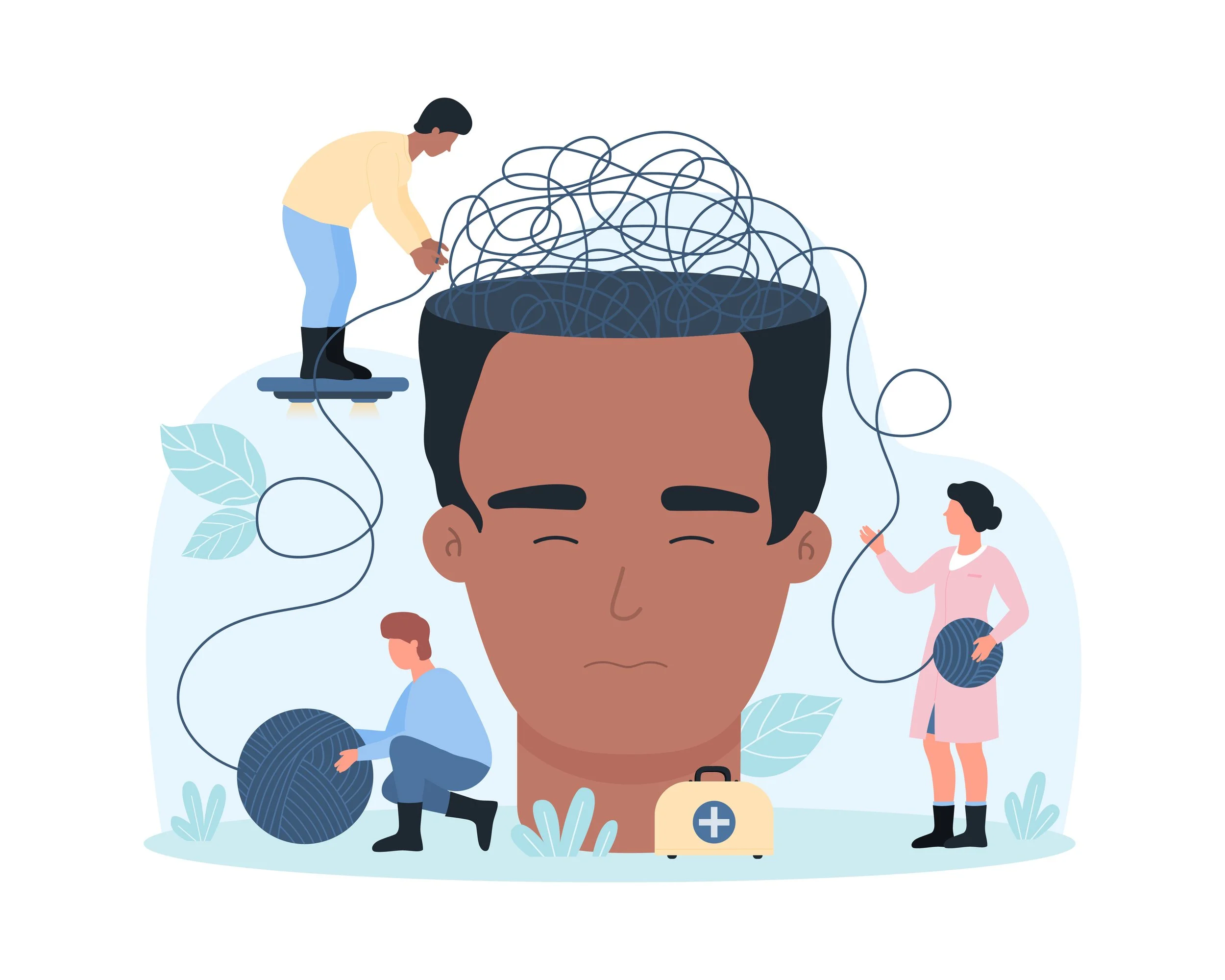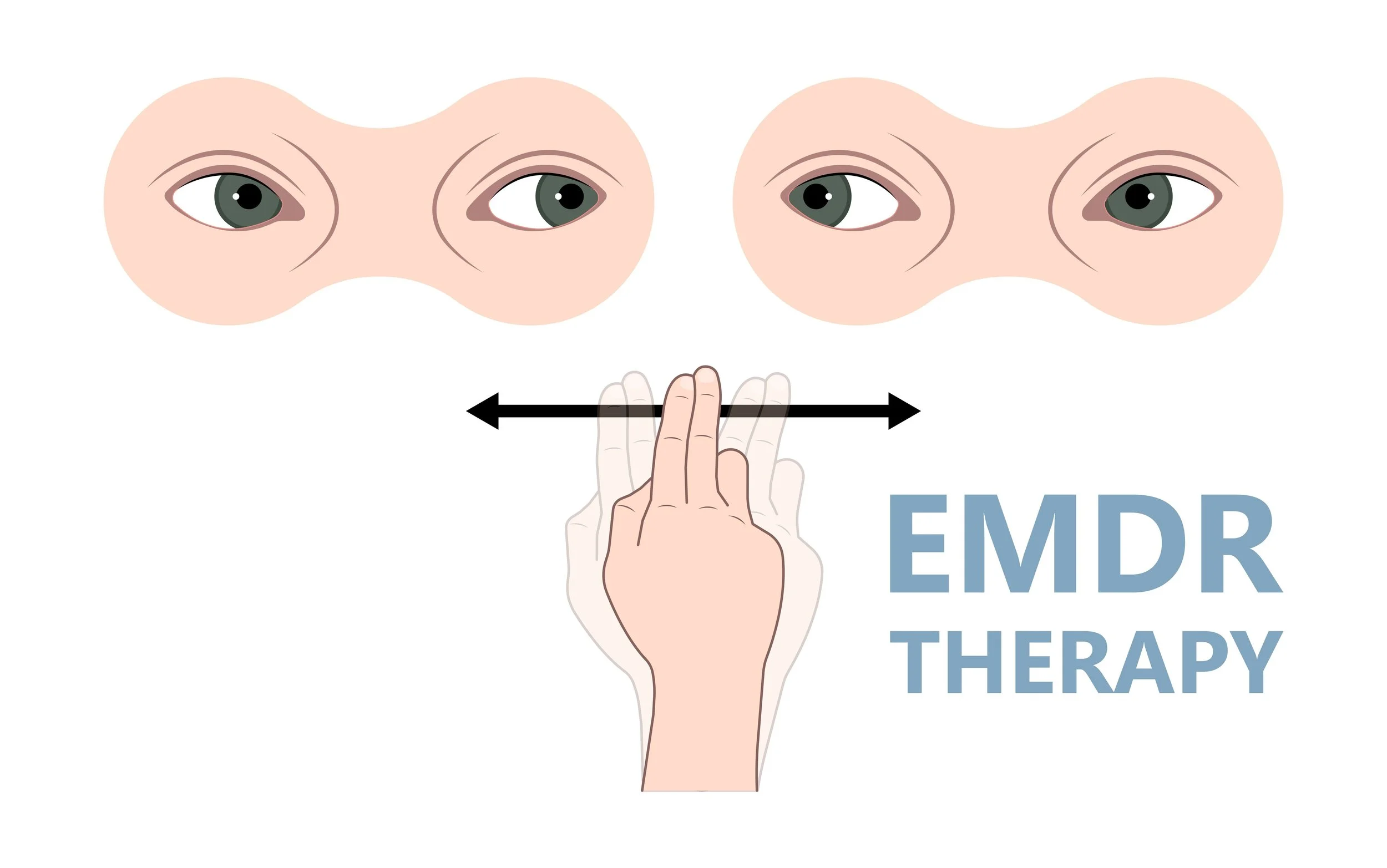EMDR:What It Is, Its Benefits, and the Neuroscience Behind It
What is EMDR?
Eye Movement Desensitisation and Reprocessing (EMDR) is a structured therapy that encourages the patient to briefly focus on the trauma memory while simultaneously experiencing bilateral stimulation (typically eye movements), which is associated with a reduction in the vividness and emotion associated with the trauma memories. Developed by Francine Shapiro in the late 1980s, EMDR was initially designed to alleviate the distress associated with traumatic memories . Since then, it has evolved into a comprehensive therapeutic approach used to treat a variety of mental health issues.
Benefits of EMDR
EMDR offers several benefits for those struggling with trauma and other mental health issues:
Effective for PTSD: EMDR is particularly effective for treating Post-Traumatic Stress Disorder (PTSD). Numerous studies have demonstrated its ability to significantly reduce PTSD symptoms .
Rapid Results: Compared to traditional talk therapies, EMDR often yields faster results. Some patients experience significant improvement after just a few sessions .
Non-Invasive: EMDR does not require medication or extensive verbal processing, making it a non-invasive treatment option.
Versatile Applications: Beyond PTSD, EMDR is used to treat anxiety, depression, phobias, chronic pain, and more .
Holistic Healing: EMDR addresses both the emotional and physical aspects of trauma, leading to comprehensive healing.
How Does it Work?
EMDR is based on the idea that traumatic memories are improperly processed and stored in the brain. These unprocessed memories can cause distress and trigger a wide range of symptoms. EMDR aims to reprocess these memories, allowing individuals to integrate them in a healthier way .
The therapy involves eight phases:
History Taking: The therapist gathers detailed information about the patient's history and identifies traumatic memories to target.
Preparation: The therapist explains the EMDR process, ensuring the patient understands what to expect and teaching relaxation techniques to manage emotional distress.
Assessment: Specific aspects of the traumatic memory are identified, including visual images, beliefs, and physical sensations.
Desensitisation: The patient focuses on the traumatic memory while engaging in bilateral stimulation, such as following the therapist’s finger movements with their eyes. This phase continues until the memory is no longer distressing.
Installation: Positive beliefs are reinforced to replace the negative beliefs associated with the trauma.
Body Scan: The patient scans their body for any remaining physical tension related to the memory and processes it until no tension remains.
Closure: The therapist ensures the patient feels stable before leaving the session, often using relaxation techniques.
Reevaluation: At the beginning of the next session, the therapist evaluates the progress and determines if additional sessions are needed .
The Neuroscience of EMDR
Understanding the neuroscience behind EMDR helps elucidate why and how this therapy can be so effective. Here’s a deeper dive into the brain mechanisms at play:
Memory Processing
Bilateral Stimulation
Bilateral stimulation (BLS) is a core component of EMDR, involving rhythmic left-right movements or stimuli. This can include eye movements, tapping, or auditory tones. BLS is thought to facilitate communication between the brain's hemispheres, enhancing the brain's ability to process traumatic memories. Here's how BLS impacts the brain:
Inter-hemispheric Communication: BLS enhances connectivity between the left and right hemispheres of the brain. This increased communication helps integrate traumatic memories, reducing their emotional intensity .
Working Memory: Engaging in BLS while recalling traumatic memories taxes the brain's working memory. This dual-tasking can reduce the vividness and emotional impact of the memory, making it easier to process .
Relaxation Response: BLS can activate the parasympathetic nervous system, promoting relaxation and reducing the physiological arousal associated with traumatic memories .
Traumatic memories are often stored in the brain differently than non-traumatic memories. They can become fragmented and disorganised, often causing distress when triggered. EMDR helps in reorganising these memories into a more coherent and less distressing form. The process involves several key brain regions:
Amygdala: Responsible for detecting threats and activating the body’s fight-or-flight response. EMDR helps to reduce this hyperactivity, leading to decreased emotional responses to trauma-related stimuli .
Hippocampus: Crucial for consolidating memories. During trauma, the hippocampus may fail to properly integrate the traumatic memory, leading to fragmented recollections. EMDR promotes the integration of these fragmented memories into the broader narrative of one’s life, reducing their power to cause distress .
Prefrontal Cortex: Involved in higher-order processing and executive functions, including regulating emotions and responses to stress. By reprocessing traumatic memories, EMDR helps strengthen the connections between the prefrontal cortex and other brain regions, enhancing emotional regulation and reducing symptoms of trauma .
Is EMDR Only for Trauma?
While EMDR was originally developed to treat trauma, its applications have expanded significantly over the years. It is now used to address a variety of mental health issues, including:
Anxiety and Panic Disorders: EMDR can help individuals manage anxiety by reprocessing the underlying memories and beliefs contributing to their anxiety.
Depression: EMDR can target the traumatic or distressing memories that may underlie depressive symptoms, helping to alleviate them .
Phobias: EMDR can reduce the intensity of phobias by addressing the root causes and changing the emotional response to the feared object or situation .
Chronic Pain: Some chronic pain conditions are linked to traumatic memories or stress. EMDR can help reduce pain by reprocessing these memories .
Addictions: EMDR can be used to address the traumatic experiences or emotional pain that contribute to addictive behaviors.
Performance Anxiety: EMDR can help individuals overcome performance-related anxiety in areas such as sports, public speaking, or artistic performances.
Grief and Loss: EMDR can assist individuals in processing the emotions associated with grief and loss, leading to better emotional regulation and healing.
Contraindications for EMDR
While EMDR can be highly effective for many individuals, there are certain situations and conditions where it may not be appropriate or may require special consideration:
Dissociative Disorders: Individuals with severe dissociative disorders may require stabilisation and specialised therapeutic approaches before beginning EMDR to prevent dissociation during sessions.
Severe Mental Illness: Those with severe psychiatric conditions, such as psychosis or bipolar disorder, may need careful assessment and management before and during EMDR therapy.
Unstable Medical Conditions: Individuals with unstable medical conditions should be cautiously evaluated to ensure they can tolerate the emotional and physical responses that may arise during EMDR.
Acute Crisis: EMDR is not typically recommended during an acute crisis or immediately following a traumatic event, as individuals may need time to stabilize before processing the trauma.
Eye or Neurological Conditions: Conditions affecting eye movements or neurological conditions that could be exacerbated by bilateral stimulation should be carefully assessed. Alternatives to eye movements, such as auditory or tactile stimulation, may be considered in these cases.
Pregnancy: While EMDR is generally safe, pregnant individuals should consult their healthcare provider and therapist to ensure it is appropriate for their specific situation, considering potential stress responses.
What to Expect During EMDR Therapy
Embarking on EMDR therapy can be both an enlightening and challenging experience. Here’s what you can typically expect:
Number and Length of Sessions
Session Duration: EMDR sessions typically last between 60 and 90 minutes. The length of each session may vary depending on the individual’s needs and the therapist’s approach.
Number of Sessions: The number of sessions required varies widely based on the complexity and severity of the trauma, as well as the individual’s response to therapy. Some people may experience significant improvement in as few as 6-12 sessions, while others with more complex trauma histories might require 20 or more sessions .
During Sessions
Initial Evaluation: The first few sessions will involve an in-depth evaluation of your history and current symptoms. The therapist will explain the EMDR process and answer any questions you might have.
Active Participation: During the desensitization phase, you will be asked to recall traumatic memories while following the therapist’s hand movements or other bilateral stimulation. This may feel intense, but it’s a crucial part of the healing process.
Emotional and Physical Reactions: It’s normal to experience strong emotional and physical reactions during and after sessions. Your therapist will help you manage these responses and ensure you feel safe and supported.
Homework: You may be given tasks to complete between sessions, such as practicing relaxation techniques or keeping a journal.
After Sessions
Processing Time: It’s common to continue processing memories between sessions. You might notice new insights or changes in how you feel about the traumatic event.
Gradual Improvement: As therapy progresses, you should notice a reduction in the intensity of your traumatic memories and an improvement in your overall well-being.
Regular Reevaluation: Your therapist will regularly assess your progress to ensure you’re moving towards your therapeutic goals.
The Take Home
EMDR is a powerful, evidence-based therapy that offers hope and healing for individuals dealing with a wide range of psychological issues. By addressing the root causes of distress through a structured and supportive process, EMDR can lead to profound and lasting change. If you’re struggling with trauma, anxiety, depression, or other mental health challenges, EMDR might be a transformative step towards a healthier, more fulfilling life. The blend of psychological and neurological mechanisms makes EMDR a unique and effective approach to healing and personal growth.
ReferencesShapiro, F. (2001). Eye Movement Desensitization and Reprocessing: Basic Principles, Protocols, and Procedures (2nd ed.). Guilford Press.van der Kolk, B. A. (2014). The Body Keeps the Score: Brain, Mind, and Body in the Healing of Trauma. Viking.Shapiro, F. (2018). Eye Movement Desensitization and Reprocessing (EMDR) Therapy: Basic Principles, Protocols, and Procedures (3rd ed.). Guilford Press.American Psychological Association. (2020). Clinical Practice Guideline for the Treatment of Posttraumatic Stress Disorder (PTSD) in Adults.Bergmann, U. (2012). The Neurobiology of EMDR: Exploring the Thalamus and Neural Integration. Journal of EMDR Practice and Research, 6(2), 73-79.Solomon, R. M., & Shapiro, F. (2008). EMDR and the Adaptive Information Processing Model: Potential Mechanisms of Change. Journal of EMDR Practice and Research, 2(4), 315-325.Maxfield, L., & Melnyk, W. T. (2000). A Working Memory Explanation for the Effects of Eye Movements in EMDR. Journal of EMDR Practice and Research, 1(4), 247-261.Lee, C. W., & Cuijpers, P. (2013). A Meta-Analysis of the Contribution of Eye Movements in Processing Emotional Memories. Journal of Behavior Therapy and Experimental Psychiatry, 44(2), 231-239.Hase, M., Schallmayer, S., & Sack, M. (2008). EMDR Reprocessing of the Addiction Memory: Pretreatment, Posttreatment, and 1-Month Follow-Up. Journal of EMDR Practice and Research, 2(3), 170-179.Korn, D. L. (2009). EMDR in the Treatment of Adult PTSD. In F. Shapiro (Ed.), The Art and Science of EMDR: A Comprehensive Review of EMDR Research. Guilford Press.



